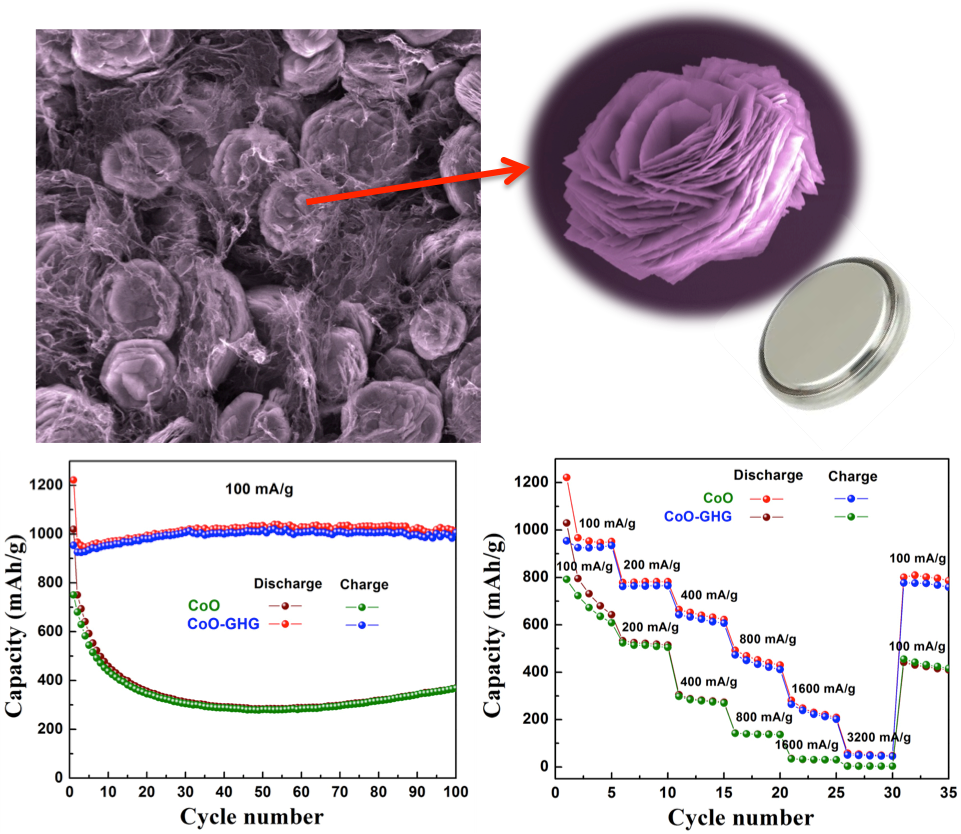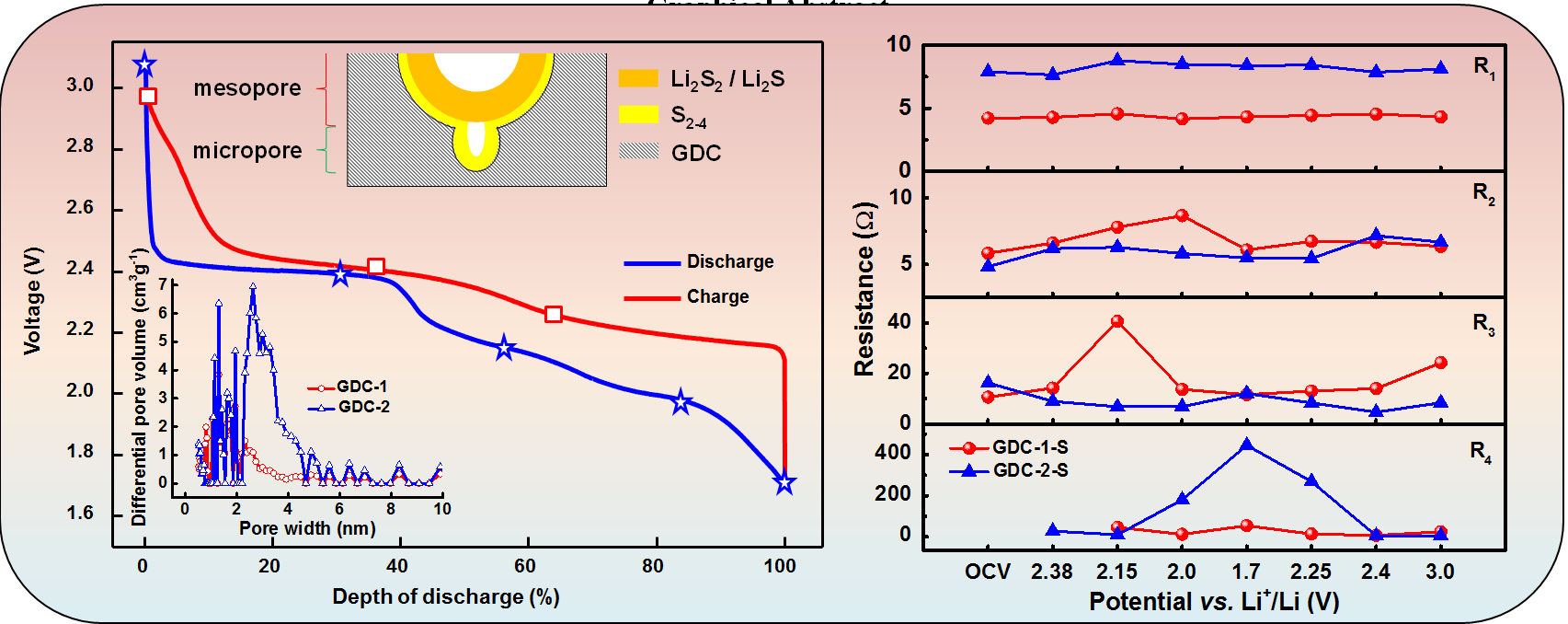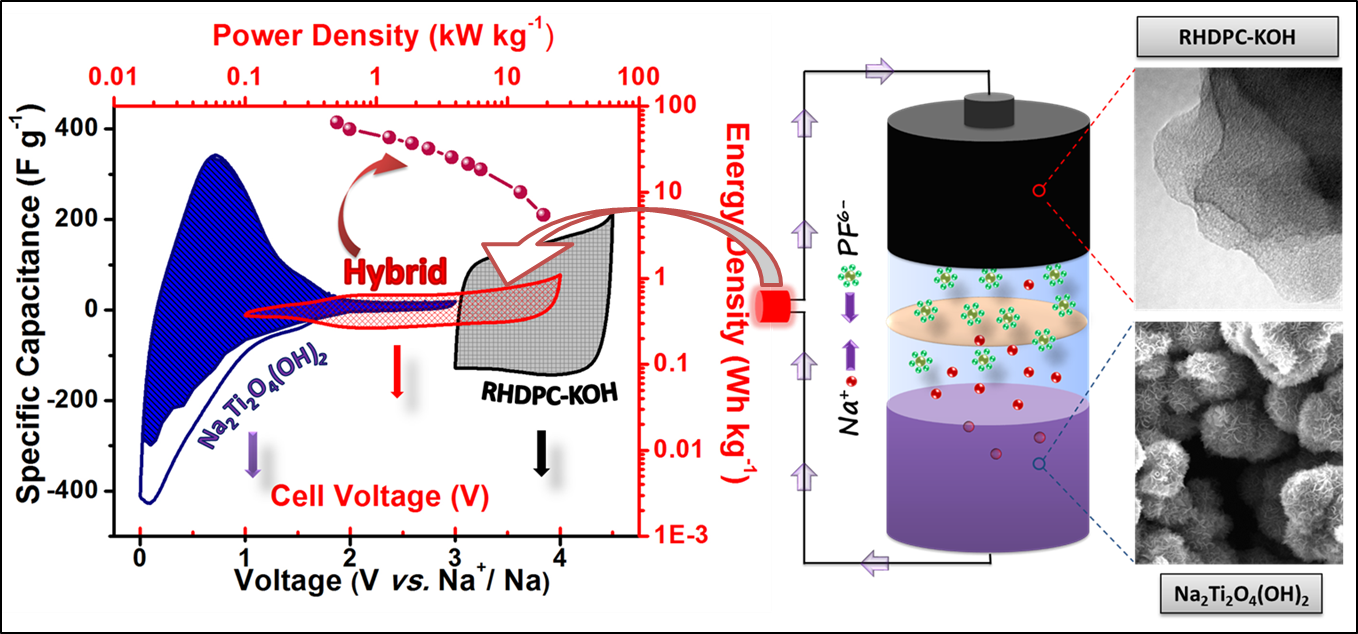Hybrid Nanostructured Materials for Li/Na ion Batteries and Supercapacitors

There is great interest in developing multifunctional hybrid nanostructured electrode materials for high performance energy storage devices such as rechargeable Li/Na-ion batteries and Supercapacitors. Novel architectures of hybrid nanomaterials have been shown to improve the device performances. Carbon based nanomaterials, owing to their high surface area and good conductivity properties, have been studied as electrodes for supercapacitors and Li-ion batteries. We have been exploring Graphene/metal oxides nanohybrids as efficient electrodes for Li- and Na-ion batteries. Achieving high energy and power densities for rechargeable batteries without any tradeoff still remains a great challenge. Hybrid Ion capacitors bridge the performance gap between Li/Na-ion batteries and supercapacitors and offer excellent energy and power characteristics. However, designing efficient anode and cathode materials with improved kinetics and long cycle life is essential for practical implementation of this technology. We have been recently looking at the fabrication of hybrid sodium and lithium-ion capacitor devices based on sodium titanate electrodes, trying to address some of the key issues. Some of our recent research activities in this area are listed below:
I. Graphene nanocomposites for High performance rechargebale batteries

Development of electrode materials for energy storage having both high energy and power densities along with good cyclic stability still remains a big challenge. Graphene-based nanocomposites have been prepared using simple hydrothermal route and were studied as efficient electrodes for Li-ion and Na-ion battery device applications. Graphene nanocomposite with good mechanical flexibility, high surface area and improved structural integrity, enhances the kinetics of lithium intercalation due to short diffusion path for Li+ transport, resulting in high power capabilities. Several such composite materials have been studied over the last few years.

We also work on Lithium-Sulphur batteries, trying to address some of the key issues in these systems such as polysulphide dissolution leading to capacity fading. In one of our recent efforts, we fabricated cathodes for lithium-sulfur (Li-S) batteries by using graphene-derived carbon (GDC) based sulphur nanocomposites, with controlled porosity characteristics. Several techniques including in-situ electrochemical impedance studies are performed to obtain valuable insights into the Li-S redox reactions and capacity fading phenomena in these electrodes.
Binitha et al., Adv. Mater. Interfaces 3, 1500419 (2016)
Ashish et al., Electrochim. Acta, 176, 285-292 (2015)
Reddy et al., Adv. Mater. 24, 5045-5064 (2012)
Aswathi et al., Electrochim. Acta, 214, 129-138 (2016)
II. Hybrid Li/Na-Ion Capacitors

Hybrid ion capacitor integrates the intercalation chemistry with physical adsorption and has been recently explored as an attractive approach resulting in improved power and energy densities. Hybrid Li/Na-ion capacitors thus bridge the performance gap between Li/Na-ion batteries and supercapacitors and offer excellent energy and power characteristics. However, designing efficient anode and cathode materials with improved kinetics and long cycle life is essential for practical implementation of this technology. Over the last few years, we have been working on these devices, trying to explore new possibilities of materials and device design so as to fabricate full cell devices with improved power and energy densities along with good cyclability. For instance, we recently demonstrated the fabrication and electrochemical performance of an efficient Na-ion hybrid capacitor by using layered sodium titanium oxide hydroxide Na2Ti2O4(OH)2, with a flower-like morphology, as anode and rice husk-derived activated porous carbon as cathode. We study the kinetics of charge storage and also look at the pseudocapacitive behavior and the capacitive contribution to the total charge storage. Further, we use Rietveld refinement and pair distribution function (PDF) to investigate the initial discharge and charge events in these electrode materials.
Binson, Lashmi and Shaijumon, Electrochim Acta, 211, 289-296 (2016)
Binson and Shaijumon, J. Power Sources, 353, 85-94 (2017)